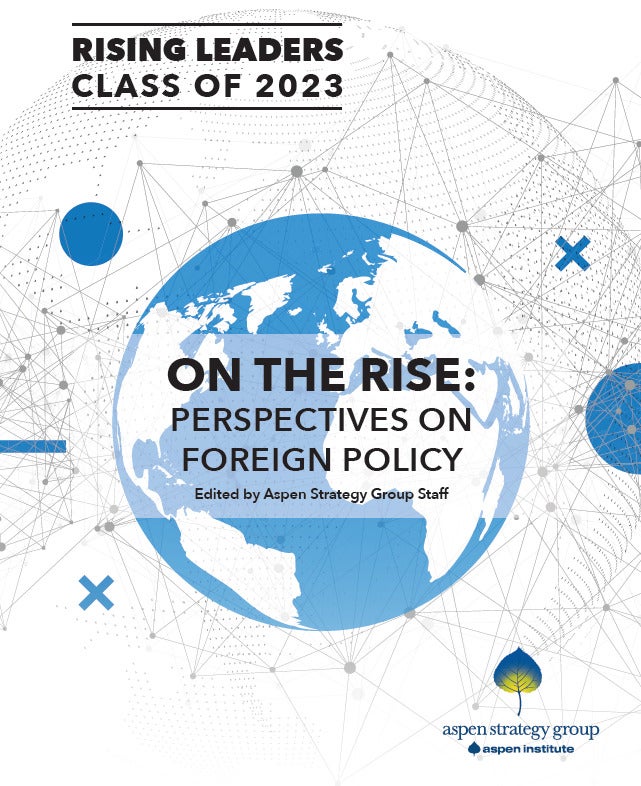The world needs a new multilateral architecture to meet the growing challenge of food insecurity if we expect to feed a population projected to reach 9 billion by 2050. To meet this demand, we cannot focus solely on food production (which the UN Food and Agriculture Organization estimates must increase by 70 percent to meet demand). In the face of climate change, disease, war, and increased urbanization, solving food insecurity demands a global and coordinated approach among the UN agencies tasked with plugging the gaps in the food-insecure world – the FAO, the International Fund for Agriculture Development (IFAD), and the World Food Programme (WFP). The challenges facing this tripartite group (known collectively as the ‘Rome-based agencies’) are many, but they can be overcome through collaboration, reform, and innovation.
The status quo, however, is unacceptable: the lack of coordinated governance, common agendas, and financial accountability undermines our ability to anticipate and adapt to critical and cumulative risks. Given the complex, interdependent, and pressing nature of food security, we propose a thoughtful and coordinated merger of the three Rome-based agencies under a ‘hub’ that will articulate a clear framework for governance, resource allocation, and collaboration to meet the transnational and cross-sector challenges of feeding the world’s growing population.
In recent years, efforts to improve performance in these core areas have advanced considerably at the national level. Countries such as Ethiopia have made enormous gains in reducing food insecurity by implementing a ‘whole of government approach’ to tackle the problem by creating and empowering a small but powerful overseeing authority – the Ethiopian Agricultural Transformation Agency – capable of cutting through bureaucracy and red tape to tighten coordination between the essential ministries of finance, health, and agriculture. This model has delivered impressive outcomes – Ethiopia made remarkable progress in the DuPont Global Food Security Index since launching the agency – and it one is worth exploring at the global, multilateral level.
Despite the growing web of actors and the increasing interdependency between governments, NGOs, universities, and the private sector, there has been no corresponding overarching approach at the multilateral level. Moreover, the environment for decision making and risk has become even more dynamic and complex. As the Institute of Sustainable Development wrote, “The complexity and urgency of 21st century issues is an unforgiving place for uncoordinated efforts of such scale and importance.” The present institutional architecture cannot provide effective governance for such a rapidly changing environment.
The current architecture revolves around the Rome-based agencies which, while effective in their own right, remain only loosely coordinated and ill-equipped to advance comprehensive preventative action. More generally, they have not instilled confidence that food security issues can be managed on a global or regional scale. There must be a more holistic approach that recognizes the ‘big picture’ nature of food insecurity and drives toward deliverables through a synthesis of market-based, technology-driven, and grassroots empowerment strategies.
The inability of the present nation-state system and multilateral architecture to deal with issues that transcend boundaries and borders has been on full display in 2014. From Ebola and cyber terrorism to aviation tragedies, we have seen the great need for coordination between governments, NGOs and the private sector, and exactly how little such coordination exists. In the near future, climate change, in particular, will only exacerbate the structural inadequacy of the global multilateral structure and the Rome-based agencies. It will become harder to achieve effective results if rising sea levels render coastal land unfit for agriculture, melting glaciers disrupt the accessibility of fresh water, and increasingly frequent droughts and natural disasters hinder access to resources and increase the likelihood of conflict.
Evidence reveals that the redundancy of efforts between the three world food agencies has served as an obstacle to greater coordination on food security. In 2008, spikes in food prices fueled major protests in Haiti and Mozambique, presaging the role of similar price surges in triggering the Arab uprisings of 2011. In both cases, the international system failed to predict how food insecurity could drive political instability.
Since 2008, there has been a surplus of responses but a deficit of collaboration. The UN Secretary General set up a high level task force of UN agencies. The G-20 set up its own global program. Bill Gates committed 1.4 billion dollars for investments in new technology. One of the most dynamic changes was the overhaul of the Committee on Food Security, an offshoot of the FAO which was taken over by over 80 grassroots producer organizations that drafted their own plan of action.
The problem is that the multiplication of new organizations exacerbates the cross-hatching of decision-making, resource allocation and accountability. The Global Governance Institute reports that at least fifteen different international organizations have been given responsibility in some form or other for food security. Yet, with all these cooks in the kitchen, the Rome-based agencies underwent minimal change, missing an opportunity to restructure into an integrated UN agency with a clear mission and greater clout.
There is a moral imperative for institutional reform. The increasingly complex demands of food and water security require innovation to overcome fragmentation and build consensus on international collaboration.
Combining resources and infrastructure by merging the three RBAs under a ‘hub’ with strong interstate leadership could bridge the gap between market-based systems and civil society. This is not a proposal for a centralized governance – in fact, the concept of a hub implies a more intensive interaction between the agencies and various stakeholders in form of networked governance. This plan seeks to leverage the strengths of the agencies and their missions. Moreover, this food security hub would already have an existing collaboration partner in the rebooted Committee on Food Security.
History reveals that integration on such a global scale is achievable. Brookings Institution President Strobe Talbott outlines how dreams of a European Union became reality because Jean Monnet started small with the right stakeholders in his essay, “Monnet’s Brandy and Europe’s Fate.” The FAO, after all, has nursed this idea since 1944, when there was serious discussion about the establishment of a World Food Board to stabilize food prices, set up reserves, and engage directly with trade and development organizations so their work would bolster food security.
Talbott uses history to remind us of a broader truth – that we need not be hostage to the status quo and that forging institutions to match global challenges is not only necessary but, with the right vision and leadership, also achievable. Monnet believed that economic integration would temper the inclination to war and conflict that had afflicted Europe for centuries. He was right. But he also recognized the need for a new European architecture to drive agreeable solutions to common problems in a way that treaded lightly on national sovereignty.
This model of ‘revisions’ to the Westphalian state system is easily unpacked and applied to food security. With effectiveness before form, a food security hub would engender the original powers and objectives of the World Food Board that were nearly cast sixty years ago: mitigate price volatility, drive institutional investment coordination, broaden risk response, scale technology application, and build partnership networks between the private sector and civil society.
To implement this vision, it’s best to incorporate the lesson of Monnet and the European Commission. As Talbott illustrated, an idea of this nature must first be incubated and deemed as viable in circles populated by the critical stakeholders of food security — the Food Security Strategy Group at the Aspen Institute and the Commission on Food Security are just two that come to mind. If the idea can build momentum while it is revised and adapted by stakeholders, it will stand a better chance of gaining global traction and adoption not only by the multilateral institutions under discussion, but also by the key leaders and influencers from the private sector and civil society who are pivotal for implementation.
While institutional reform is a tall order, it is a necessary one in the case of food security. One fact is certain: we cannot expect to feed 9 billion people by 2050 under the present, fragmented international architecture. The issue of coordination and governance must be addressed. Housed at the UN and empowered by the public and private sectors, an elevated hub for food security coordination would be poised to drive an integrated global strategy on food security by leveraging the strengths of the existing architecture. This may seem a bold suggestion, but all of the world’s multilateral institutions were at one point just ideas. The time has come to add new tools to the global toolbox to address food insecurity. The stakes are too high not to try.


